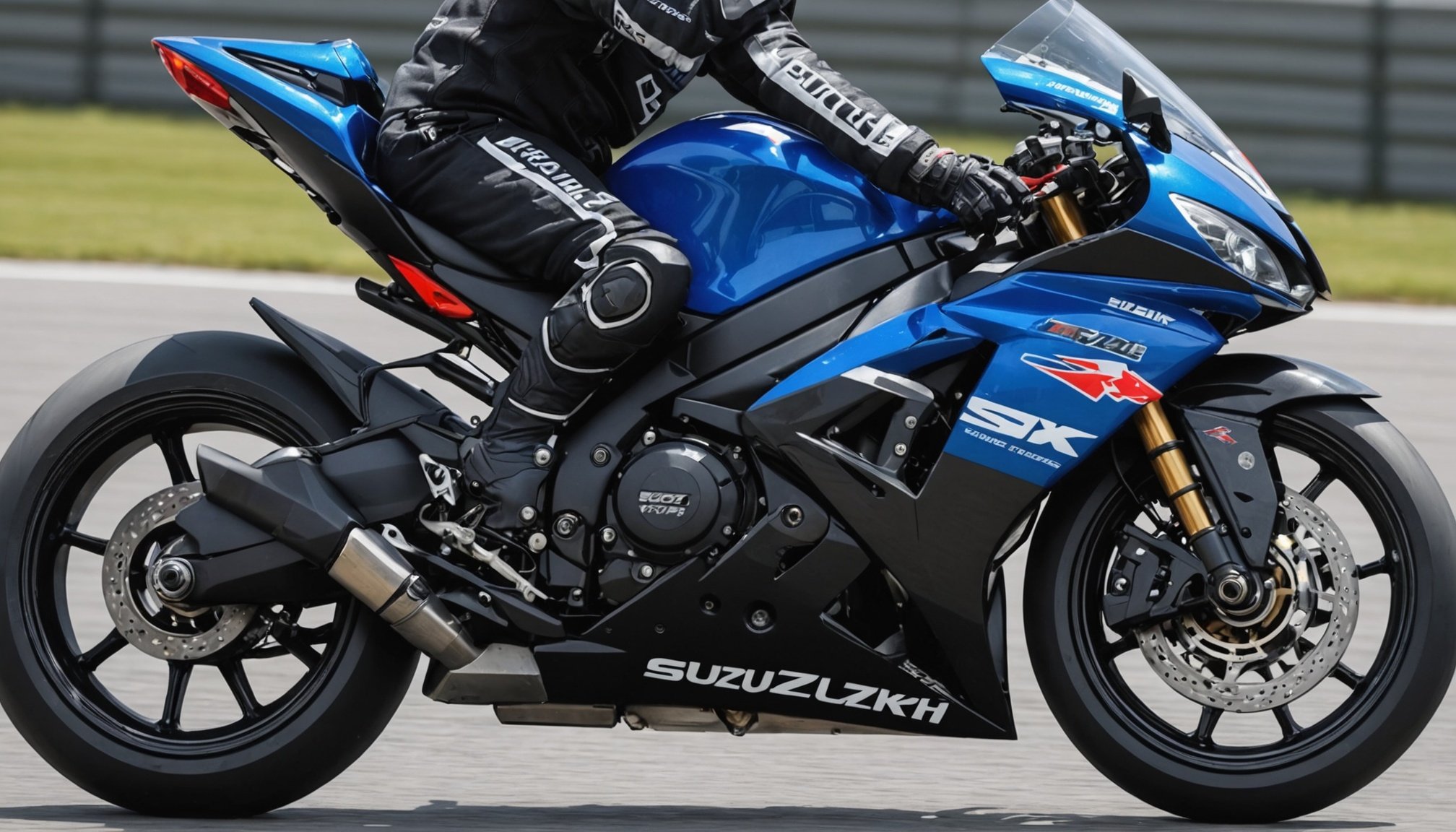Understanding ABS and Its Importance in the Suzuki GSX-R1000
The Anti-lock Braking System (ABS) is a crucial component of motorcycle safety, particularly in models like the Suzuki GSX-R1000. This innovative technology prevents the wheels from locking up during braking, thereby maintaining traction and allowing the rider to steer around obstacles. The importance of ABS settings cannot be overstated, as they play a pivotal role in enhancing both the performance and safety of the motorcycle.
In practical terms, ABS significantly impacts braking and stability. When a rider applies the brakes, ABS automatically modulates the brake pressure to avoid wheel lock-up, particularly in slippery conditions. This modulation ensures that the motorcycle maintains stability and reduces the stopping distance. By adjusting the ABS settings, riders can tailor the system to suit their personal riding style and terrain, optimising both safety and performance. Understanding and configuring these settings is essential for any rider seeking the best combination of control and confidence on the road. With ABS, the odds of avoiding accidents increase, thus making every ride not just enjoyable but also significantly safer.
Additional reading : How can you use hand signals to communicate with drivers while riding?
Step-by-Step Guide to Adjusting ABS Settings
Before adjusting the ABS settings on your Suzuki GSX-R1000, you must ensure everything is ready. Adjusting these settings can significantly impact your bike’s performance and braking sensitivity, allowing for a tailored riding experience.
Preparing for Adjustment
To begin, consider the pre-requisites for ABS adjustment. Check that your motorcycle is stationary and on a stable surface. Gathering necessary tools, like a wrench set, may require consulting the vehicle’s manual for specific tools needed.
In parallel : What are the benefits of taking a motorcycle safety course before hitting the road?
Accessing the ABS Control Module
The next step involves locating the ABS control module. Typically, this module is housed under the seat or within the fairings. Make sure you safely expose the module without causing any damage to the motorcycle’s components.
Adjusting Brake Sensitivity
Once the module is accessible, you can start adjusting the brake sensitivity settings. Use your tools to make gradual changes, focusing on how the brakes respond to various pressures. Each small adjustment can refine performance, ensuring optimal safety and control according to your preferences and riding style. Regularly test ride your bike to evaluate these changes. Adjusting the ABS settings offers improved handling and a customised riding experience on the road.
Analyzing the Impact of ABS Adjustments
Understanding the performance effects of ABS adjustments on your Suzuki GSX-R1000 is crucial for achieving desired handling and braking efficiency. Initially, modifying the ABS can significantly alter how your motorcycle responds under braking conditions. These short-term effects manifest in enhanced control and reduced stopping distances, which contribute positively to safety.
However, the real advantage lies in the long-term benefits these performance effects provide. For riders, consistent ABS calibration builds rider confidence, allowing them to feel more assured and in command, whether cruising or navigating sharp turns. Tailoring ABS settings often translates into a riding experience that aligns with personal preferences and conditions, offering a blend of precision and reliability.
By analysing how ABS adjustments affect performance, riders can purposefully tweak settings to create the best possible riding experience. This proactive approach not only capitalises on the braking efficiency of the motorcycle but also ensures that riders maximise both control and safety on various terrains, ultimately enhancing their overall riding experience.
Troubleshooting Common ABS Issues
Encountering problems with the ABS in your Suzuki GSX-R1000 can be frustrating, but understanding how to troubleshoot these issues helps maintain optimal motorcycle performance. Identifying warning signs early is crucial for addressing potential problems before they escalate.
Identifying Warning Signs
One of the first steps in ABS troubleshooting is recognising when the system is malfunctioning. Common warning signs include illuminated ABS warning lights on the dashboard, unusual noises during braking, or inconsistent brake pressure. These indicators suggest potential sensor errors or system faults requiring immediate attention.
Fixing Sensor Errors
Sensor errors are often the primary cause of ABS malfunctions. To resolve these, inspect the sensor wiring and connections for any visible damage. Cleaning the sensors to remove dirt and debris can also restore their functionality. Ensure that the sensor alignment is correct with the wheel hub, as misalignment affects performance.
When to Seek Professional Help
If the ABS issues persist after basic troubleshooting, seeking professional assistance may be necessary. A qualified mechanic can conduct a comprehensive diagnostic, addressing deeper system faults. Prioritizing timely intervention ensures the anti-lock braking system continues to provide essential safety and performance benefits.
Best Practices for Maintaining ABS Settings
Engaging in regular ABS maintenance is crucial for ensuring peak performance optimization of your Suzuki GSX-R1000. By routinely checking and adjusting your ABS, you can significantly enhance your bike’s response to braking conditions, keeping it in top shape.
Regular Checks and Adjustments
Regularly inspecting the ABS settings can prevent small issues from becoming major concerns. Ensure that components such as sensors and connections are clean and aligned correctly. Adjust the ABS calibration periodically to maintain optimal performance optimization, particularly after any major ride or environmental change.
Monitoring and Iterative Changes
Consistently monitor how your motorcycle performs in various conditions. Use this feedback to make iterative changes to your ABS setup. Simple tweaks can lead to a better understanding of your bike’s needs, resulting in smoother rides and enhanced control. Committing to these practices will build familiarity with your ABS, increasing both handling and system reliability.
Staying proactive with your Suzuki GSX-R1000 care ensures that the Anti-lock Braking System not only functions reliably but also extends the lifespan of your bike’s components. This diligent approach aids in maximising both safety and riding enjoyment.
The Benefits of Mastering ABS Settings on Your GSX-R1000
Mastering the ABS settings on your Suzuki GSX-R1000 unlocks numerous benefits, significantly enhancing your riding experience. By fine-tuning these settings, riders can achieve improved handling and control, which is crucial for navigating various road conditions with confidence.
A well-adjusted Anti-lock Braking System offers increased safety by reducing stopping distances, particularly on slippery surfaces where traditional braking might fail. This ensures a smoother, more reliable performance, allowing riders to react adeptly in sudden situations.
Building Rider Confidence
Both novice and seasoned riders can gain from mastering ABS settings. For beginners, understanding and optimising these settings fosters a sense of security and assurance as they learn the intricacies of their bike. Experienced riders benefit from the ability to tailor the ABS to align with their advanced skills and adventurous terrains.
Ultimately, the benefits of ABS mastery extend beyond safety, providing a platform for riders to explore and enjoy their GSX-R1000 to its fullest potential. Whether weaving through city streets or tackling winding roads, optimising your ABS settings transforms every ride into a safer, more exhilarating journey.











